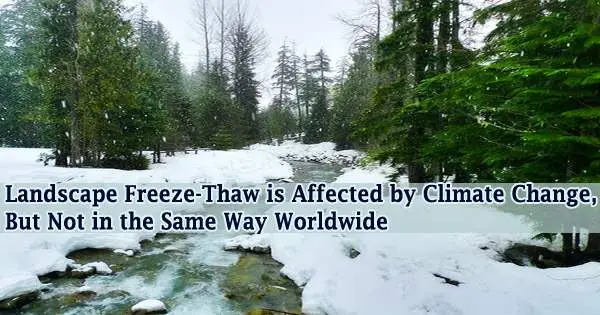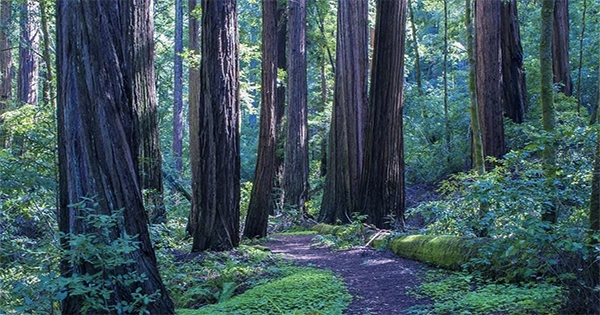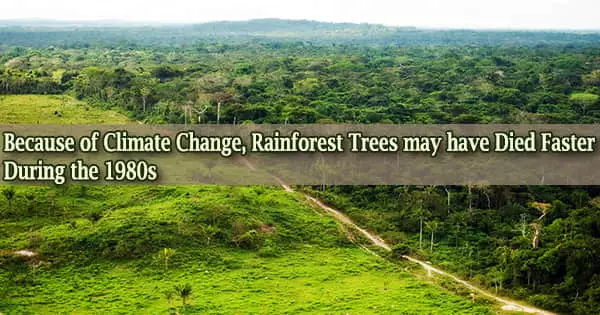A seasonal thaw is never simple, as any resident of a northern area is aware. The freeze-thaw cycle can extend for several months, but in the past it was lessened by stable air temperature and a thick layer of snow. However, climate change warms the air and thins the snow, which can impact this cycle.
This may have significant effects on greenhouse gas emissions in the north and urban infrastructure in the south, according to a recent study by Concordia researchers published in the Nature journal Scientific Reports.
The researchers show how an increase in air temperature and a decline in snow cover together increase the effects of climate change in a non-linear way, amplifying the overall impact felt on the ground. To do this, they use a new statistical framework to analyze datasets from the National Snow and Ice Data Center, Princeton University, and the Canadian Meteorological Centre in Dorval, Quebec.
Additionally, they have varying effects on Quebec’s various natural zones, posing particular issues for decision-makers and citizens.
“The historical data shows there is a vivid divide between Quebec’s northern areas and the southern parts of the province, where the majority of Quebec’s population and assets reside,” says Ali Nazemi, an associate professor in Concordia’s Department of Building, Civil and Environmental Engineering, and the principal investigator of the project and co-author of the paper.
The paper’s lead author is Concordia graduate Shadi Hatami, PhD 21, currently a postdoctoral fellow at McGill.
By calculating these non-linear responses, we can try to quantify how many fewer frozen days we will see in the north and how many more transitional days we will see in the south under changes in temperature and snow depth conditions. This provides us with a way to approximate how many more tons of gases will be released into the atmosphere and how much more deterioration of our infrastructure we can expect.
Ali Nazemi
Compounding problems
The researchers point out the connections between air temperature, snow cover, and freeze-thaw cycles. In the winter, a thick layer of snow serves as a blanket for frozen earth. The ground thaws earlier as the snow cover recedes, allowing warmer air to permeate the area.
Fewer days of frozen soil are experienced in the province’s most northern districts as a result of these changes, which increases the possibility that thousands of tons of greenhouse gases like carbon and methane will be released into the sky.
These added gases will act to intensify the effects of climate change.
There will be more transitional days throughout the winter months further south, in the denserly populated regions of the St. Lawrence river basin, when the soil undergoes a thaw and a freeze, with water repeatedly expanding and contracting as temperatures rise and fall. This will put further stress on already flimsy water, bridge, and transportation infrastructure.
“By calculating these non-linear responses, we can try to quantify how many fewer frozen days we will see in the north and how many more transitional days we will see in the south under changes in temperature and snow depth conditions,” says Nazemi.
“This provides us with a way to approximate how many more tons of gases will be released into the atmosphere and how much more deterioration of our infrastructure we can expect.”
A quick reversion is also possible
The authors note that the opposite is also true, albeit less intensely than warming, and that it happens in the same way as rising temperatures and diminishing snow cover cause accelerated thawing across the province’s natural zones.
The number of frozen days in the north and the number of transitional days in the south would return to more closely resemble the historical norm if there were fewer frozen days and more transitional days, which can also result from lower air temperatures and higher snow cover.
Nazemi thinks that the power of this paper’s mathematics and the volume of data made accessible by various technologies, such satellite remote sensing, are key factors.
Permafrost thawing has been the subject of numerous prior studies that have anticipated an increase in greenhouse gas emissions; however, these studies frequently relied on small-scale, complex simulations of the physics behind the phenomena.
The new approach is based on statistical functions and probability theory, with data acquired from 25km × 25km scale pixels of Quebec’s area.
“We brought this newer mathematical analysis to quantify some factors that had not been quantified before,” he says. “We are now in the process of upscaling this methodology to cover the entire area of Canada and Alaska.”
















